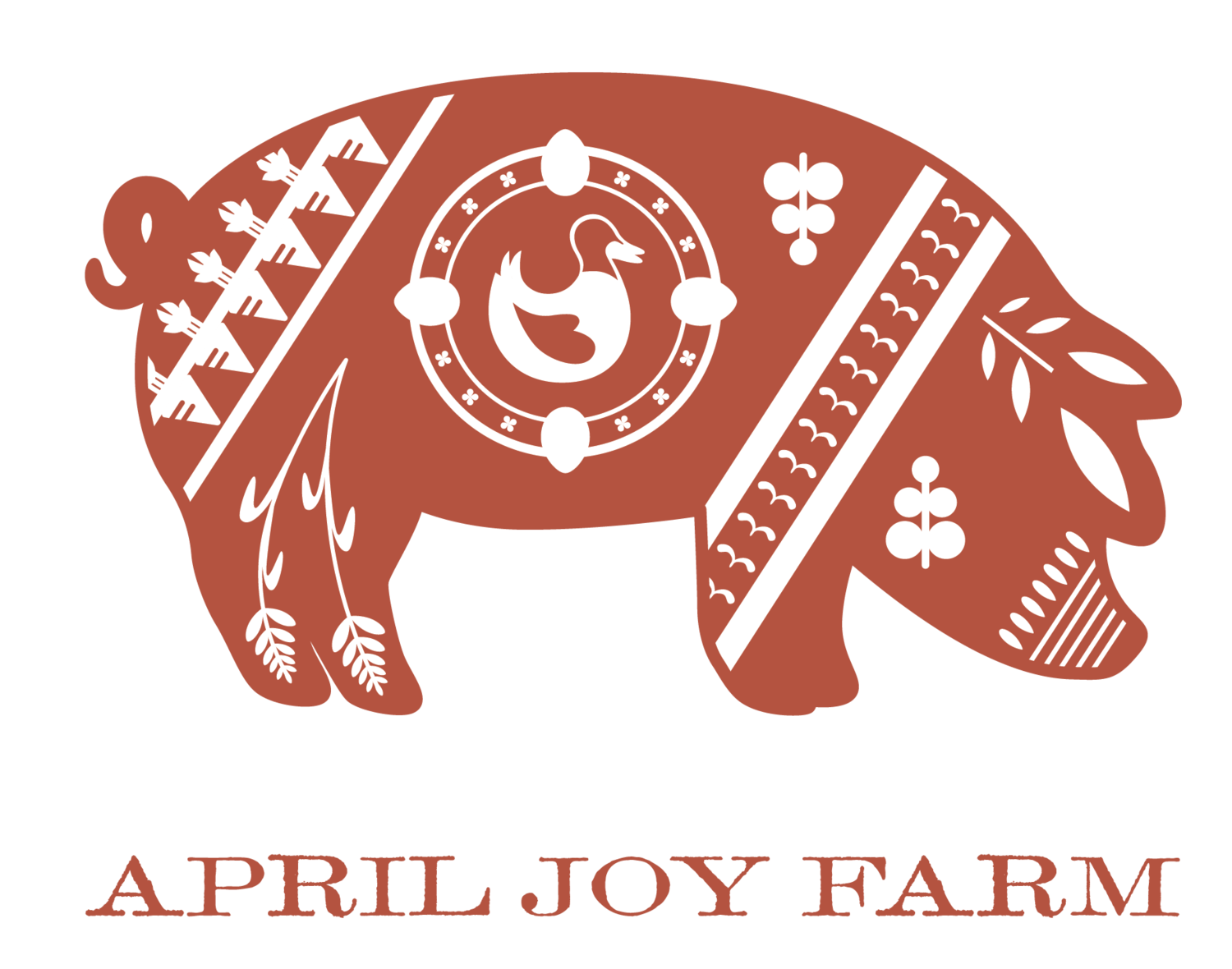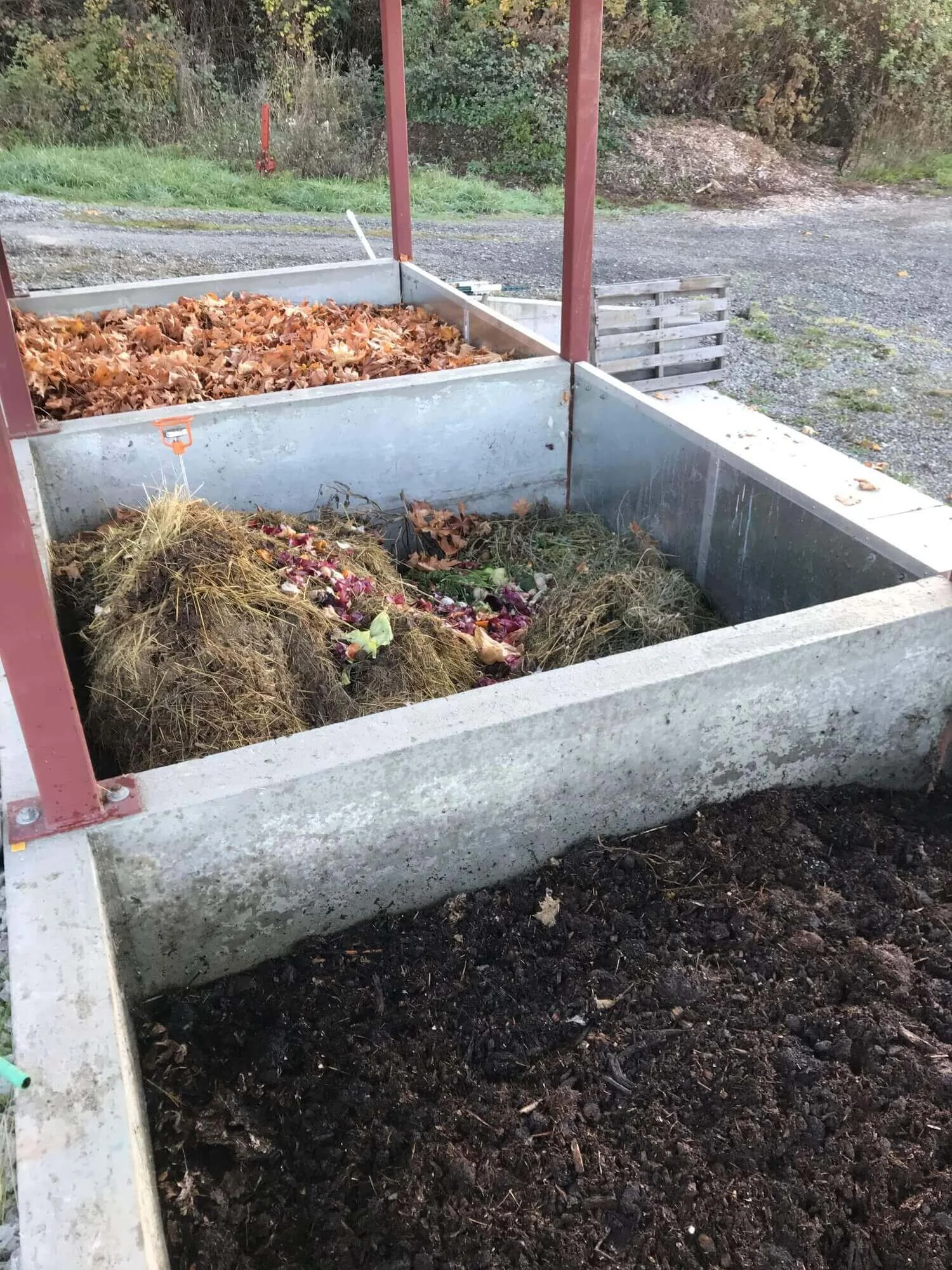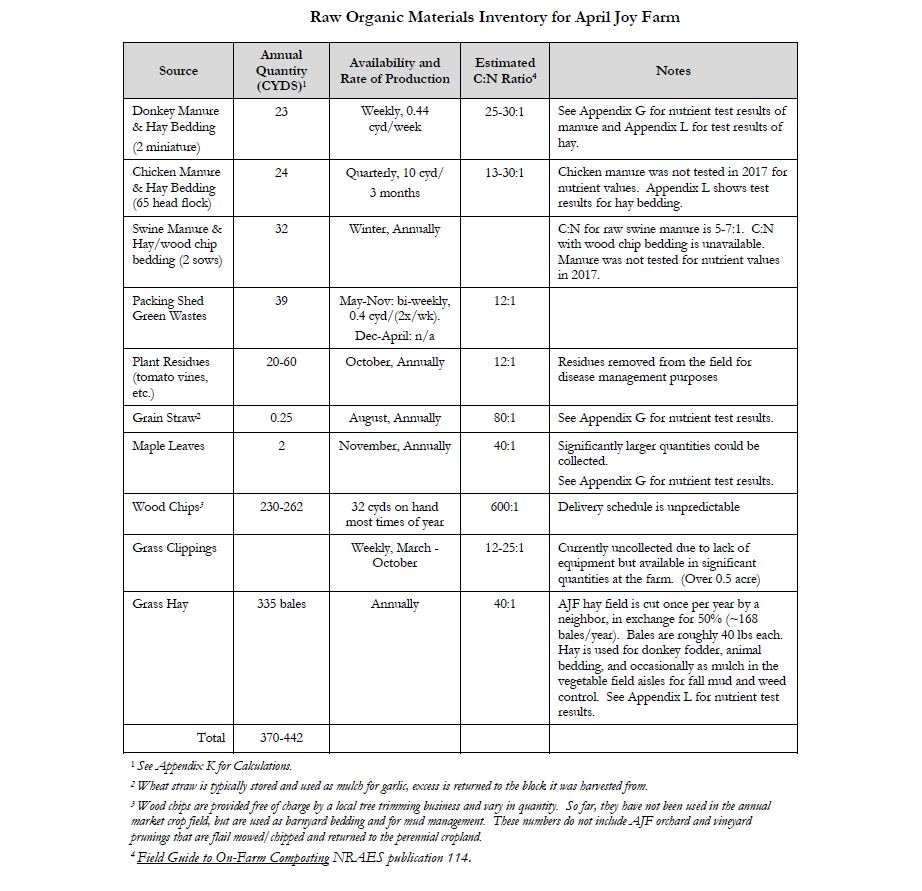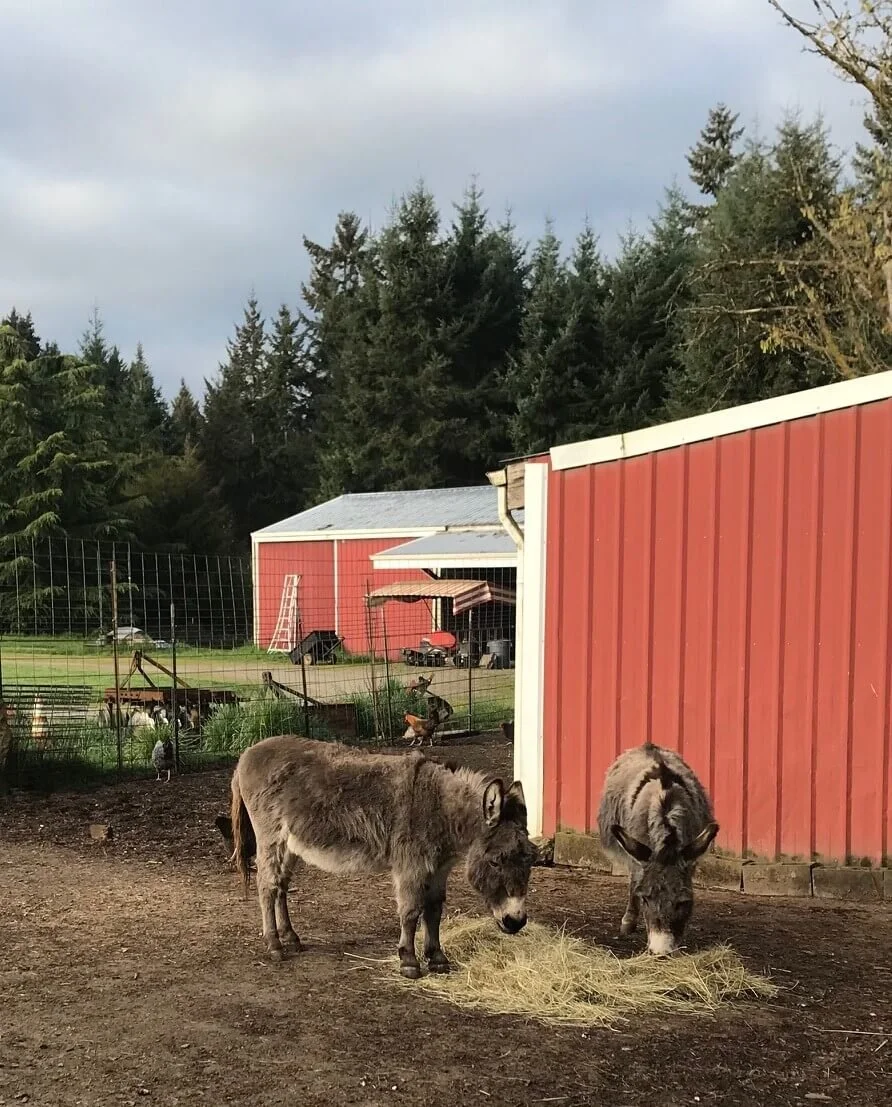Organic Materials: 3 Steps to Reducing Costs and Improving the Health of Your Soil
Learn how to improve and maintain your soil health by creating and updating a Master Organic Materials List for your farm.
What is physically applied to our soil will affect its health. The organic materials section of your Soil Health Roadmap (SHR) is at the core of how healthy your soil is.
By now, you’re familiar with the process of assessing and improving your soil health:
So let’s jump in.
1. Review and Summarize Historical and Current Practices
Make a Master Organic Materials List.
Sustainable farmers use a wide variety of materials to ensure the health and vigor of our crops and livestock.
Do you have a comprehensive list of everything you’re using?
Gather up your records and put together a Master Organic Materials List.
The best place to start is to write down everything you (or your grazing animals in the case of manure) are applying to your production areas, rough estimates of how much you’re applying, where it’s used, and the time of year/date it’s applied.
Washington State Department of Agriculture has a form you can download and use.
I also like to indicate the purpose for the material.
If this is the first time you’ve reviewed your historical and current practices, it may help to think in terms of categories of use:
Soil Health & Fertility
Crop or Livestock Production Aids/Nutrition
Pest Management
Disease Management
Weed Management
If you’re a certified organic operation, your material inputs list will be the foundation of your Organic Materials Inventory.
As I’ve described above, a materials input list identifies everything that is physically applied to your crop or livestock production areas, the source or manufacturer, as well as the reason for use.
All the certifying agencies require producers to maintain this document. This list is a great start to reviewing how you use organic materials on your farm. You don’t have to be certified organic do this valuable practice.
Quick Tips
When I first put together my list, it helped to think chronologically. For instance, I make my own potting soil mix to grow all my own transplants. All the components of that potting soil eventually end up in my field. By thinking about my seeding, transplanting and harvest activities, I made sure I didn’t accidentally forget anything because I wasn’t just relying on fertilizer tags or receipts.
You’ve already quantified many of your nutrient inputs when you prepared your Systems Nutrient Budget (SNB). Include the SNB information on your Master Organic Materials List. (Remember, your SNB is only focused on a particular nutrient so it won’t be comprehensive like the list you’re generating now. For example, the coarse sand I buy doesn’t show up in my SNB calculations because it doesn’t represent a source of nitrogen or phosphorus.)
Organic Materials include everything that you source from your farm (manure, leaves, straw, etc.) as well as all your purchased inputs. Review your out of pocket expenses (receipts) and quantify the materials already cycling on your farm.
Rethink the term “applied to your soil”. Some materials you use at your farm may not be organic in nature but they come in contact with your soil. Plastic or paper weed barriers and treated wood posts impact soil health, so include them in your Master Organic Materials List.
List everything you’ve applied to your land in the last 12 months. Including more than one year will give you a better perspective about your past practices (for instance you may only apply lime every 2-5 years), but if this is the first time you’ve prepared a Master Organic Materials List, this process could feel overwhelming. If that’s the case, start with just one year. You can always add to the list moving forward.
(Now would be a great time to review your current practices and find a way to improve how you collect and store this type of data for your farm. I use an Excel spreadsheet to track my organic materials usage. I print out a copy and attach it to a clipboard so I can handwrite updates throughout the year. At year end, it’s easy to tally up.)
Prepare a Short Summary
After you have a Master Organic Materials List, take fifteen minutes to write down your important thoughts about how you currently utilize organic materials and inputs on your farm.
It’s fine if this is in paragraph form or just bullet points. The point is to capture the major elements of what you’ve been doing and why.
For my SHR’s Master Organic Materials List, I wrote 1-3 paragraphs for each of the following headings:
Fertility: A general overview of how I attempt to maintain/increase Soil Organic Matter (SOM) and how much I rely on purchased amendments, including annual costs and quantities.
Timing: What time of year/frequency I applied bulk amendments - manure, lime, fertilizers, etc.
Weed, Pest, and Disease Management: The primary materials and/or methods I used and when.
Organic Materials/Manure Management: How I handle the collection, storage, and application of manure and packing shed scraps (the two biggest ‘waste’ streams my farm generates).
Here’s a brief portion of what I wrote:
To provide fertility for market crops, the farmers have historically relied on purchased amendments. Organic matter has been maintained through the long-term use of winter cover crops and by consistently keeping as much plant residue as possible in the fields at harvest. Because 100% of annual transplants are grown on the farm and on average 70% of all crops are transplanted, substantial inputs of peat moss, (0.5 tons) and vermicompost (1.4 tons) are applied on an annual basis. Annual fertilizer purchases range from $1,000-$3,000 per year.
- Read more on page 34-35 of the April Joy Farm SHR.
You may want to summarize in a different format, and that’s ok.
Just put pen to paper (or fingers to keyboard!) so you have a written record.
2. Identify Challenges and Opportunities
Challenges
If you have obvious challenges when it comes to organic materials, write them down. If you’re not sure where to start, it may be helpful to frame your thoughts around five basic questions. What? Where? When? How and how much? And finally why?
What? Look at your Master Organic Materials List. Are any items hard to source? Expensive? Risky because of the potential for contamination?
Where? Refer back to your soil health assessment. Are there areas of your land that have an excess or deficiency of nutrients? Can you relate that to some of your previous or current organic material applications? (For example, are continued applications of manure causing an excess of phosphorus?)
When? Do the materials you’re applying (or livestock you’re grazing) cause a buildup or excess at certain times of the year? Do you have challenges related to timing applications to meet crop needs? Do you have an influx of organic materials on your farm at a certain time of year and no good way to utilize them?
For example, in January I have a ¼ acre of grape prunings that need to be processed with a flail mower. Without this mower, I’d spend hours of labor each year to handle these prunings or I’d have to pay someone to haul off them off. Some growers even burn them. Ack! The flail mower chips up the long woody vines into small pieces that decompose fairly quickly and send those nutrients right back down to the grape roots.How and how much? How are you calculating how much material to apply and how are you tracking actual applications? Is this calculation a straightforward process or is it a shot in the dark? Likewise, are any of the materials you’re using problematic to handle or spread? Are you unable to use materials you’d like to source because you lack the proper equipment or infrastructure to handle them?
Why? Look back at the Master Organic Materials List you created in the previous step. Think about the purpose of using each one of the materials. Are the materials you’re using actually working? If not, detail the reasons why.
Organic materials (both sourcing and management) was one of the primary challenges I faced as a new farmer.
Writing down a list of problems in my system was not a difficult task!
For one thing, I didn’t have the equipment or infrastructure to collect and efficiently make use of the manure, plant debris, and packing shed ‘wastes’ that my farm was generating. I was putting it all in a pile and passively composting it, but I didn’t feel confident about applying that material back to my fields for fear of the spread of pathogens and weed seeds.
In addition, a few years prior, I had purchased horse manure from a neighbor. It turned out that the horses had been fed hay that had been sprayed with a broadleaf herbicide and this herbicide residue was still present in the manure.
I suffered a crop loss (and a lot of stress) because of it. After that episode, I could no longer rely on off-farm sources of manure to provide inexpensive fertility for my produce.
This experience led me to adopt several rescue donkeys to provide a clean source of manure. But initially, I didn’t have a good way to manage their manure, and obviously, it was going to pile up!
So I ended up spreading the manure directly on my fields, but was this the right thing to do? (In hindsight, it wasn’t a good idea to spread it on the fields, due to the high levels of phosphorus in my soil. Now, I compost it.)
Another challenge I faced was that I wanted a reliable source of large quantities of compost that I could use to increase the soil organic matter (SOM) levels in my crop fields. The idea was to apply this compost as a mulch to help reduce my irrigation and cut down on weed management cultivation. I had many of the pieces in place to solve this dilemma, but as of yet had not been successful integrating everything into a workable system.
By contrast, I wasn’t using or applying many weed, pest, and disease management materials, so I only briefly mentioned this when summarizing my challenges.
Opportunities
Once you’ve completed your challenges list, create a second Organic Materials List - not of what you’re currently using, but of everything you have available on your farm (or from nearby sources that you trust) that you could be using.
List the estimated quantities, time of year available and any particular notes you feel are relevant.
Do you live near the ocean? Think about the possibility of sourcing seaweed or crab shells or byproducts from a nearby fish market.
Do you live near a quarry? You may be able to purchase rock dust that is a substantial source of trace minerals and micronutrients.
Does a neighbor butcher meat birds and have a supply of offal you could compost? Be creative!
Here’s an example from my farm.
I have several acres of forest on my land and multiple stands of Big Leaf Maple trees, so I added maple leaves to my Opportunities list, even though I didn’t have a great way of collecting them efficiently.
Remember, you’re generating ideas here - not solving every last problem.
I also included the Carbon to Nitrogen ratio (C:N) to consider how to mix these materials to produce high quality compost.
Take a look at your expenditures over the past 1-3 years.
Specifically, what particular input(s) have you been spending the most money on?
Can you brainstorm any opportunities to reduce your costs by making use of alternatives that are already cycling on or nearby your farm?
If you have livestock, remember that any feed you purchase represents another form of nutrients/organic materials.
How beneficial (or detrimental) these organic materials are for your soil (and the financial health of your farm) is ultimately a result of your management practices.
For example, I struggled to justify the high cost of purchasing regionally grown, certified organic poultry grains for my layer hens. I could never recoup the cost in egg sales, because I couldn’t raise my prices high enough to cover the feed costs.
Housing my layer hens on pasture and implementing sound rotational grazing practices, however, changed the dynamics of the whole system.
If I view the grain feed I’m purchasing as a beneficial soil amendment, then I can easily justify the cost.
My chickens are essentially ‘borrowing’ this amendment and processing it for me to enhance the nutritional value for my soil.
From this perspective, the feed I’m purchasing isn’t just going down the drain. As long as I’m able to collect or somehow capture and apply the manure to my fields, instead of letting it accumulate in one spot to create a pollution problem, I’m leveraging one organic material purchase (feed) for multiple benefits (animal nutrition, soil health, crop health).
3. Create a List of Recommendations
Look back at your historical practices and challenges summaries. Can you identify and connect between what you’ve done and what problems you’re currently facing?
Now look at the list of available materials and opportunities you’ve drafted.
Spend at least 10 minutes brainstorming ideas for how to improve the sourcing, handling, storage, and/or application of organic materials on your farm.
What are you curious about?
What questions arise?
What strategies are you interested in pursuing?
When you look at the list of what organic materials are already available and those that you’re purchasing, focus on items that are currently ‘going down the drain’.
Are there opportunities to capture these materials and keep them cycling on your farm?
Put these possibilities on your recommendations list.
After putting together the summary of materials available to me, I went back and reread my overall goals for my farm.
I also thought about my Self-Land-Community Venn Diagram.
Reflecting on these elements of my SHR helped me become clear about how I wanted to improve my organic materials usage.
A primary goal was to reduce reliance on off-farm (purchased) inputs. Avoiding off-farm inputs would improve soil health because I was reducing the risk of contamination.
My SNB helped me see that applying manure directly to my fields was exacerbating the already high phosphorus loads in my soil.
Putting together a list of everything I could source right from my farm proved to be an important step.
I saw clearly that if I could find a way to build the proper infrastructure and purchase the right-sized equipment, I could make better use of all the different organic materials existing on my farm.
My recommendations list included building a Static Aerated Composting Structure that was perfect for my needs along with an extra bay for storing materials that were available at certain times of year such as maple leaves, packing shed wastes and chicken coops. The extra bay also has a roof to prevent leaching from winter rains which allows me to manage materials throughout the winter months.
Don’t ignore or discount recommendations because you can’t afford them or don’t think they’re practical to implement.
Initially, I had no idea how I could pay for the composting structure. Still, I took time to lay out my rationale.
Sometimes the best solutions are right under your nose.
I have a significant amount of acreage and in the spring, it’s a push to keep our farm access lanes and corridors mowed. It was hard to justify spending the time when there is always so much else to do. But just this year, I purchased a $800 bagger attachment for my lawn mower. Yeah, exactly like you see on the golf courses. Now, I have family and friends that not only mow for me but collect those valuable quantities of grass clippings for mulching my rhubarb, perennial herbs and even my precious tomato crop. I’ve just saved myself hours of weeding, added valuable organic matter to my soil, reduced my irrigation usage and improved the aesthetics of the farm.
Quick Tips
Make “improving your recordkeeping” one of the recommendations on your list if you currently struggle with keeping track of materials.
Set yourself up for success.
Are there 5 minutes in your work day or week that you could set aside to update your Master Organic Materials List?
Keep it simple and make it easy.
Can you stash a small notebook in the cab of your tractor?
Can you keep your organic materials form right next to the coffee pot?
Be creative and leverage your current routine to find what works for you.
Remember, recordkeeping is one path to improving soil health, not an impediment.
Next, simply write down your proposed list of recommendations for managing organic materials on your farm.
You don’t have to decide which of these recommendations to implement quite yet.
Once you’ve worked through all four elements of the Nutrient and Field Management Plan from Rotations, Cover Crops, Machinery and Equipment, come back to your Organic Materials recommendations list and see how the pieces all fit together.
What you use, as well as how and when you apply organic materials to your land is a management practice that has a major impact on your soil health.
Your choices also have significant impacts on the financial viability of your business and your personal health.
As for my donkeys and the challenge of sourcing clean, uncontaminated manure, here’s the rest of the story.
When I needed a source of manure, I knew that horses were not a good fit for my personality and farm setup. Plus, I couldn’t easily produce enough high protein hay to meet their dietary needs. So I made connections with a local donkey rescue organization and adopted donkeys instead. There were minimal costs involved and the donkeys thrive on the lower-protein grass hay I grow right on my farm.
As an added benefit, my CSA families love visiting Eeyore and Dumpling when they come to pick up their produce each week. You could say our donkeys are a big part of our marketing and sales team at April Joy Farm.
This type of closed loop nutrient cycling represents a substantial improvement to multiple aspects of my farm operation.
Organic materials are a foundational element of sustainable soil health. By focusing on how materials cycle on your farm, you’ll be on your way to improving the health and well being of your entire system.



